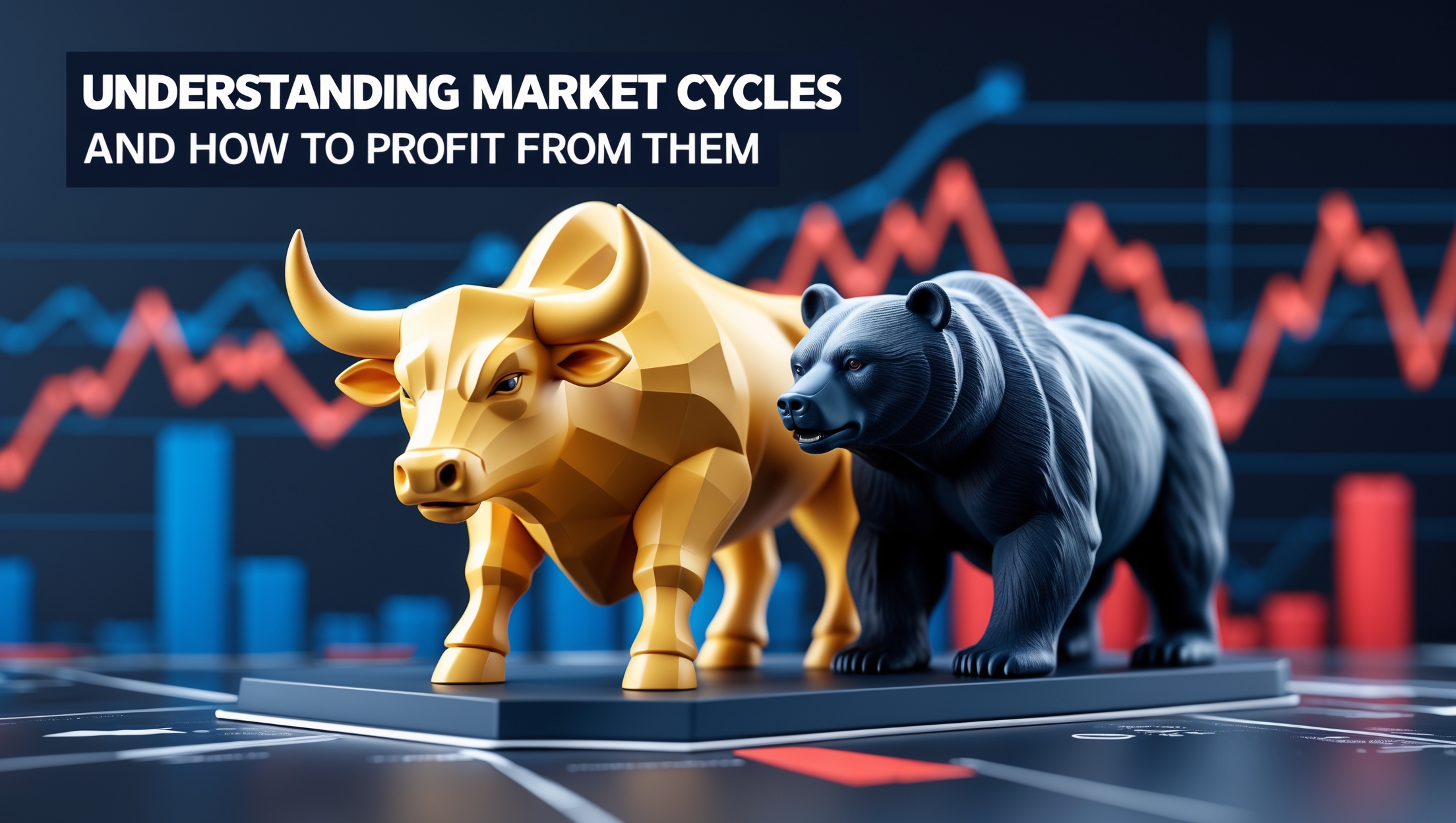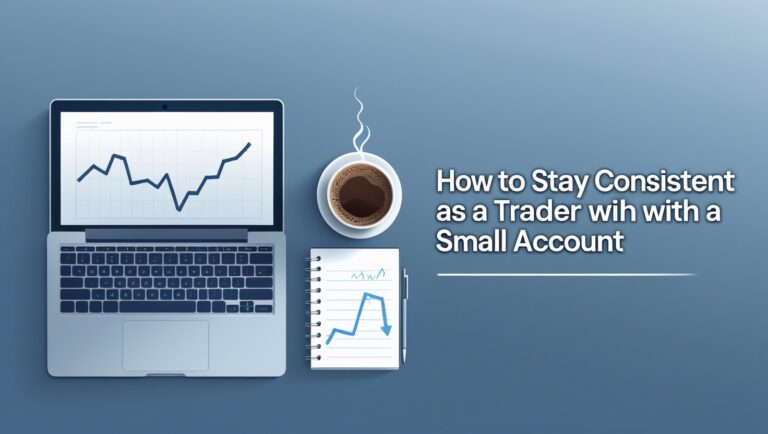Understanding Market Cycles and How to Profit from Them
Understanding Market Cycles and How to Profit from Them
Market cycles drive everything from stock prices to investor behavior. In this guide, I’ll break down the four phases of market cycles, how I personally recognize them, and strategies I use to profit whether the market is rising or falling.

Table of Contents
What Are Market Cycles?
When I first started investing, I thought markets just moved randomly. But with time, I realized that the stock market moves in predictable cycles: expansion, peak, contraction, and recovery. Understanding these cycles changed the way I invested.
The Four Phases of Market Cycles
- Expansion: The economy grows, stock prices climb, and optimism is high.
- Peak: Prices hit extremes, valuations stretch, and euphoria often blinds investors.
- Contraction: Markets decline, fear spreads, and investors panic.
- Recovery: The bottom forms, confidence returns, and opportunities emerge.
Recognizing which phase we’re in has helped me adjust my strategy instead of reacting emotionally.
How I Spot a Market Expansion
During expansions, I look for rising earnings, low unemployment, and bullish investor sentiment. This is when I increase exposure to growth stocks and ETFs, knowing momentum is on my side.
Recognizing Market Peaks
At peaks, valuations get stretched. I remember times when friends were piling into stocks at all-time highs—often a red flag. Instead of chasing, I shift into safer assets or trim profits to protect gains.
What Happens During Contractions
Contractions can feel painful, but they create buying opportunities. Instead of panicking, I focus on quality companies and dividend stocks that pay me to hold even through downturns.
Why Recovery Phases Matter
Recoveries are when the biggest profits often happen. Fear is still in the air, but smart investors who buy during recovery often get the best long-term returns.
How to Profit from Market Cycles
I use different strategies depending on the cycle:
- Expansion: Lean into growth and momentum stocks.
- Peak: Take profits and build cash reserves.
- Contraction: Buy high-quality stocks at discounts.
- Recovery: Accumulate aggressively while others hesitate.
Avoiding Emotional Traps
Market cycles often trigger emotions—fear during contractions and greed during peaks. I had to train myself to stay disciplined and not follow the crowd.
Tools I Use to Identify Cycles
I pay attention to economic indicators like GDP growth, interest rates, and unemployment. I also track volatility measures (like the VIX) to understand investor sentiment.
Why Market Cycles Repeat
The reason cycles repeat is simple: human behavior never changes. Greed and fear drive markets just as much as fundamentals. Once I understood this, I stopped being surprised by downturns.
Building a Long-Term Plan Around Cycles
Instead of timing the market perfectly (which is nearly impossible), I focus on having a strategy for each cycle. This way, no matter what phase we’re in, I know how to respond.
The Role of Diversification
Market cycles affect assets differently. Stocks, bonds, real estate, and commodities each react uniquely. By diversifying, I smooth out the ride and profit from different phases.
Staying Invested Matters
One of the biggest mistakes I made early on was trying to exit before downturns. Timing never worked perfectly. Staying invested, while adjusting my allocations, gave me better long-term results.
My Personal Takeaway
Understanding market cycles gave me confidence. Instead of fearing downturns, I now see them as chances to build wealth. It’s not about predicting perfectly—it’s about being prepared for whatever comes next.
Learn My Full Strategy
If you want to see exactly how I build wealth through every market cycle—expansion, contraction, and recovery—I break down my entire approach in my ebook: Pay Bills with Stocks. It’s the system I personally use to grow my investments consistently and with confidence.
✅ By the end of this guide, you can see that market cycles aren’t something to fear—they’re something to understand and profit from. With the right mindset, you can turn cycles into opportunities instead of obstacles.
When I first started investing, I was scared of downturns. I used to think contractions were the end of the world for my portfolio. But once I learned how market cycles worked, I began to see downturns as opportunities to buy strong assets at a discount instead of moments to panic.
I also noticed that different sectors perform better in different phases of the cycle. For example, during expansions, growth sectors like technology and consumer discretionary often thrive. In contractions, defensive sectors like utilities and healthcare tend to hold up better.
Another lesson I learned is that sentiment often lags reality. By the time most investors realize we’re in a contraction, the market has already priced in much of the fear. That’s why I try to stay one step ahead by studying economic indicators.
During recoveries, I look for undervalued companies with strong fundamentals. These are the businesses that not only survive downturns but come out stronger on the other side. Buying them early often produces the best gains.
I’ve also found that cash is a position too. At peaks, holding a cash reserve gives me the flexibility to scoop up bargains when markets eventually contract. It’s not about timing perfectly but about staying prepared.
Market cycles also taught me the importance of patience. Wealth doesn’t come from chasing every hot stock. It comes from holding through cycles and knowing when to rebalance.
Even with bonds, cycles play a role. When stocks are volatile, bonds can provide stability. I learned how to adjust my stock-to-bond ratio depending on where we are in the cycle.
I pay attention to central bank policies as well. Interest rate hikes often signal the end of expansions, while rate cuts are often tied to contractions or recoveries. Understanding these moves gives me clues about where we’re headed.
I also learned not to ignore global events. Wars, pandemics, and trade disputes can accelerate market cycles or shift them unexpectedly. Staying informed helps me adapt without overreacting.
One powerful tool I’ve used is dollar-cost averaging (DCA). By investing consistently, no matter the phase, I smooth out the highs and lows. This strategy takes the stress out of trying to time cycles.
I think of cycles like seasons. Just like winter eventually turns to spring, contractions eventually give way to recoveries. That perspective helps me stay calm when markets look their darkest.
Another insight is that cycles aren’t always the same length. Some expansions last years, while others are cut short. That’s why I avoid rigid predictions and instead focus on having a playbook for each phase.
I’ve also used cycles to refine my dividend investing strategy. During contractions, I lean on dividends as steady cash flow. During recoveries and expansions, I reinvest those dividends for maximum compounding.
What keeps me motivated is knowing that cycles are the engine of long-term wealth creation. Without downturns, there would be no bargains. Without expansions, there would be no growth. Accepting the rhythm of cycles is part of being a disciplined investor.
Finally, if you want to see the exact steps I use to profit from market cycles without stressing about timing, I explain my full method in my ebook: Pay Bills with Stocks.

Stay ahead in the stock market! Subscribe to our newsletter and receive exclusive stock flow reports, trading insights, and actionable tips directly in your inbox. Join thousands of traders who get our updates first.







